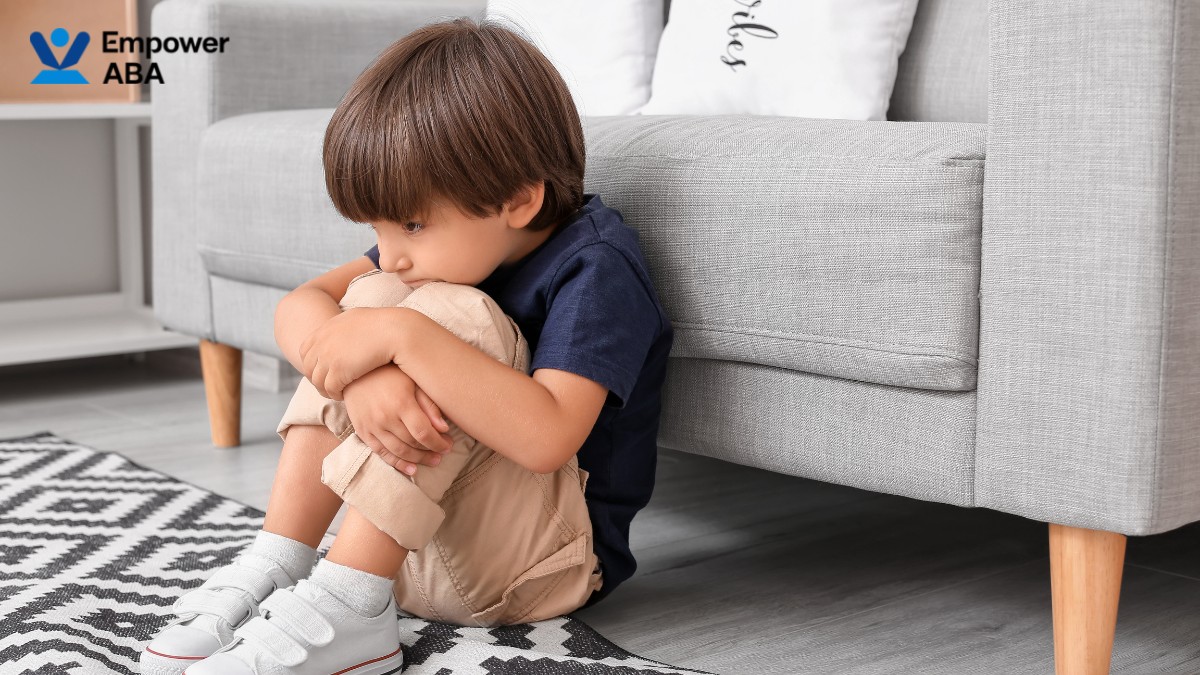Key Points:
- Autism sensory deprivation involves minimizing sensory input to reduce overstimulation and promote regulation.
- Techniques like dark rooms, noise reduction, and deep pressure can offer calming effects for autistic individuals.
- Sensory deprivation can be used alongside ABA therapy to support emotional regulation and reduce meltdowns.
Not every meltdown stems from behavior. Sometimes, it’s sensory overload quietly building until it boils over. Sensory deprivation can provide the reset kids need—a way to dial down the intensity and feel safe. For many children with autism, even a few quiet minutes can make a major difference.
What Is Autism Sensory Deprivation?
Autism sensory deprivation is a strategy used to reduce overwhelming sensory input for individuals on the autism spectrum. It can help manage sensory overload, decrease anxiety, and promote a sense of calm. For some children, structured deprivation can provide relief and a much-needed break from intense environmental stimuli.
What Does Sensory Deprivation Look Like in Practice?
Sensory deprivation isn’t about complete isolation—it’s about creating an environment where sensory input is minimized in a safe, purposeful way. It’s often used in short, structured periods when a child is overstimulated or at risk of meltdown.
Examples include:
- A quiet, dimly lit room to reduce visual and auditory stimuli
- Use of noise-canceling headphones to block overwhelming sounds
- Wearing soft, snug clothing or compression garments
- Weighted blankets or deep-pressure vests for calming input
- Minimizing social demands during periods of sensory recovery
These methods provide a protective environment where children can process intense experiences more comfortably.
What Are the Benefits of Autism Sensory Deprivation?
While every child responds differently, many benefit from short periods of reduced stimulation. The key is finding the right balance—sensory deprivation should be tailored to the child’s needs and used as part of a broader sensory support plan.
Here are some of the top benefits of controlled sensory deprivation:

It’s important to note that autism sensory deprivation is not a long-term solution, but a valuable tool that complements other interventions.
What Are the Signs a Child May Need a Sensory Break?
Recognizing when a child may benefit from sensory deprivation starts with observing their behavior. Children on the spectrum often communicate sensory distress through body language, avoidance, or sudden behavioral shifts.
Look for these signs:
- Covering ears or eyes frequently
- Escaping or withdrawing from busy environments
- Irritability, crying, or emotional outbursts
- Clumsiness or uncoordinated movement
- Repetitive behaviors like rocking, pacing, or hand-flapping
- Trouble focusing or shutting down in stimulating settings
If these behaviors appear frequently, it may be helpful to introduce sensory breaks during high-demand parts of the day, like transitions or after school.
How to Create a Sensory Deprivation Space at Home
Designing a calming sensory retreat at home doesn’t require expensive equipment. With just a few adjustments, you can build a reliable sensory space that your child can use when they need to decompress.
Here are ideas to consider:
- Low lighting: Use blackout curtains or soft lamps to create a soothing space.
- Minimal noise: Add noise-canceling features like rugs, curtains, or a white noise machine.
- Comfort items: Include weighted blankets, soft pillows, or calming textures.
- Neutral colors: Avoid bright walls or overwhelming patterns.
- Defined boundaries: Set up a pop-up tent, small nook, or playhouse to create a private zone.
- Accessible fidget tools: Have stress balls, chewables, or squishy toys nearby for regulation.
The space should be flexible—something your child can access when needed without it feeling like a punishment or timeout.
What’s the Difference Between Sensory Deprivation and Sensory Play?
Both sensory deprivation and sensory play are important for children with autism—but they serve different purposes. Sensory play involves engaging with sensory input, while sensory deprivation focuses on reducing input when it becomes overwhelming.
Use sensory play when a child is regulated and ready to explore. Use sensory deprivation when they’re showing signs of overload. Together, these approaches can help build a well-rounded sensory toolkit.
Can Sensory Deprivation Be Used in ABA Therapy?
Absolutely. Many ABA therapy programs incorporate sensory strategies to support regulation and focus. Sensory deprivation techniques can be used during or between sessions to help a child remain calm and receptive to learning.
Some common ways sensory deprivation complements ABA:
- Before learning tasks: Short quiet time to settle the nervous system
- During transitions: Reducing environmental input to ease changes in routine
- After meltdowns: Providing space for the child to calm down safely
- During data collection: Observing how sensory breaks impact behaviors over time
By combining structured therapy with sensory regulation tools, children can make more consistent progress toward their goals without being overwhelmed.

Important Considerations for Parents
Before introducing autism sensory deprivation, parents with autistic children must understand a few things. Every child’s sensory profile is different, and what works for one may not work for another. Also, sensory deprivation should never be used in isolation or for extended periods.
Tips for safe and effective use:
- Start small: Try short breaks (5–10 minutes) and observe your child’s reaction.
- Offer choices: Let your child decide when they want to use the sensory space.
- Monitor emotional responses: If the child becomes distressed or agitated, stop and try a different approach.
- Pair with other tools: Use sensory play, movement breaks, and communication tools alongside sensory deprivation.
- Work with professionals: Collaborate with occupational therapists or ABA providers to ensure the approach is personalized.
When used intentionally and appropriately, autism sensory deprivation can be a powerful way to help your child find calm and comfort.
Support Your Child’s Sensory Needs with ABA Therapy
Every child with autism deserves support that’s as unique as they are. If your child experiences sensory overload, meltdowns, or difficulty with transitions, ABA therapy can help provide structured strategies to build emotional regulation, communication, and independence.
At Empower ABA, we partner with families to deliver personalized ABA services in New York, New Jersey, and Virginia. We understand the importance of integrating sensory needs into learning and behavior plans—so your child can thrive with the support they need.
Let’s work together to build a plan that meets your child where they are. Contact us today to learn how Empower ABA can support your family through compassionate, evidence-based care.

